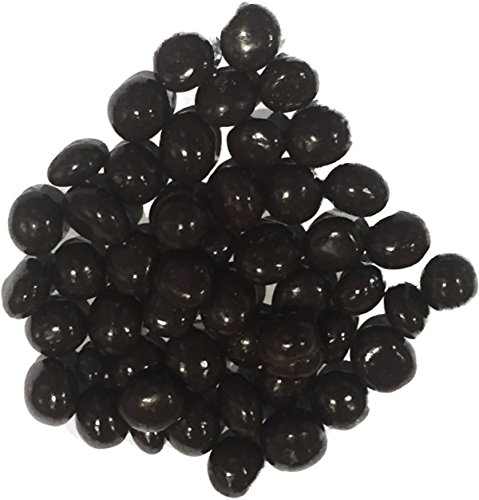Don't Stop! 15 Things About Types Of Coffee Beans We're Sick Of Hearing

Types of Coffee Beans
Behind every cup of coffee we drink, there are carefully graded beans. These beans are evaluated based on their size color, shape, and density.

The AA rating is given to coffee beans that fulfill the criteria above, except that they must not have more than 3 defects (quakers). These beans are usually Kenya AA beans.
Arabica
Arabica coffee beans, also referred to as Coffea arabica are the most coveted kind of bean around the globe. The legend says that coffee was first discovered in Ethiopia when a goat herder observed his herd's dancing more vigorously after eating the fruits of the coffee plant. This prompted him to try roasting seeds and brewing them, which resulted in the beverage that we love today.
Although a variety of coffee plants exist There are only two major species used to create the basis for all of our favorite coffees: robusta and arabica. The taste of the final drink is typically better with the robusta variety.
There are a variety of different cultivars of arabica, with each possessing its own distinctive flavour profile. Typica and Bourbon are two of the most popular arabica cultivars. All other arabica varieties were developed from these two varieties either through natural mutations or intentional crossbreeding. Scott Labs developed the SL28 cultivar in Kenya and is renowned for its distinct chocolate flavor.
The flavor of an arabica variety will be determined by the environment in which it is cultivated, as well as how it is handled and roasted. For example, the type of shade a plant receives, its altitude and soil composition could all play a major part in the final flavor.
Robusta
Robusta coffee beans, also referred to as coffee canephora, are the second most common type of coffee. These beans are used in the majority of instant coffees and have twice as much caffeine than Arabica Coffee Beans. They are also used in numerous espresso blends, notably for caffe latte and cappuccino.
The Coffea Canephora plant originated in Sub-Saharan Africa, but it has since been cultivated around the globe. It is able to grow at lower elevations and can withstand higher temperatures than the Arabica coffee plant, which makes it a much more practical crop for farmers. Vietnam is the largest producer of robusta, followed by Brazil and Indonesia.
The robusta plant makes a wonderful coffee however it's not a popular choice among cupping enthusiasts because of its bitter taste and burnt-rubber hints. Most major coffee companies utilize arabica beans to make their top-quality products since it's considered to be a less premium coffee.
The demand for gourmet coffees is growing and small roasters are also experimenting to make the most of its exceptional qualities. coffeee.uk and Death With Coffee coffee are two examples. Both are exceptional robustas that are blended with arabica to achieve the perfect balance between flavor and strength. These are coffees from Uganda, a country where robusta has long been cultivated. Learn more about these coffees.
Liberica
Liberica coffee beans are rare and are seldom used around the globe. They make up less than 2% of the world's coffee consumption, and are often overlooked since they don't contain the same amount of caffeine as Arabica and Robusta do. But, they have distinctive flavor that many coffee lovers find appealing.
Liberica coffee beans, despite being extremely rare they are still very popular in certain parts of Asia. These beans are most common in Malaysia and Indonesia where there is a significant Muslim community. The coffee industry in these countries has historically been very strong, and drinking the cup of coffee after prayer is a part the tradition.
Liberica coffee's roots go back to the 1890s in the 1890s, when a global outbreak caused by rust on the coffee leaf destroyed the arabica crop. This triggered coffee producers to discover an alternative species that could thrive in tropical climates, and they quickly discovered the Liberica plant.
Liberica plants have a high tolerance to pests and diseases which makes them a great alternative to the devastated arabica crop. Liberica can also be grown in lower altitudes and hot temperatures which allows it to thrive in Southeast Asia's climate. This is the reason why, today the majority of coffee that is produced in the Philippines, Indonesia, and Malaysia originates from Liberica beans.
Excelsa
Although it's not typical for coffee lovers to see excelsa coffee beans in their cups, these more rare beans are beginning to earn the reputation of having a distinct flavor. According to Komal Sable, a fifth generation coffee farmer with South India Coffee Co., these beans are "a variation of the liberica species with similar teardrop-like shapes however, they are smaller." But despite this family resemblance it is important to remember that excelsa is technically not a separate species.
As such, it's a little ambiguous as to how excelsa beans should be classified, and it's this confusion that has largely been the cause of the beans' absence in the contemporary world of coffee. Due to this, many roasters, farmers, and brewers aren't sure how to cultivate and utilize these beans properly.
In the end, it's up to the individual to decide what they prefer about the taste of the coffee excelsa and it may take a bit of time to find a blend that suits your preferences. It is important to be open and try different kinds of coffee until you discover the one that you like. You'll get to explore the full range of possibilities these unique beans offer. It's an experience that's worth the ride.
